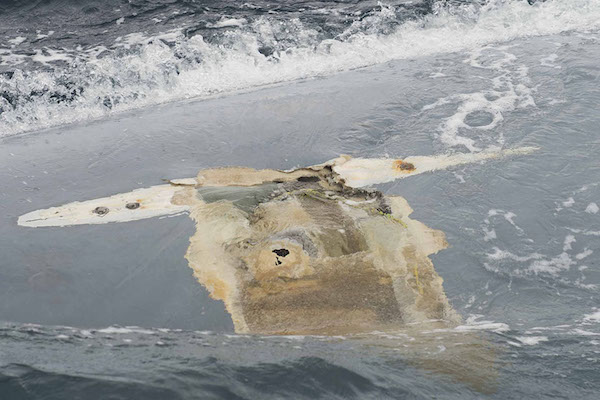'Cheeki Rafiki' safety lessons published
MAIB has recently published the investigation report into the loss of the UK registered yacht Cheeki Rafiki in May 2014, in which certain synergies with the superyacht sector can be found.…
The yacht’s upturned keel-less hull was seen just twice; once over 36 hours after the skipper’s last voice call from the high-sided container ship Maersk Kure conducting a track line search, and a second sighting was by personnel from USS Oscar Austin who examined the upturned and partially submerged hull, providing the only imagery on which the MAIB could base their report, but could not recover it.
McCourt explains that, in the report, the Maritime and Coastguard Agency has come into the line of fire. “Complex and vague commercial versus pleasure craft definitions and the boat’s ability to slip through a survey net are inexcusable,” he says. “Clarity and enforcement are long overdue.”
To identify synergies with the superyacht sector, McCourt advises that the report should be a salutary reminder to all captains and crew of the need for a measured and carefully considered passage plan, and that adequate preparations are needed to manage any emergency situation on a long ocean passage.
The report also covers the construction of Glass Reinforced Plastic (GRP) hulls in considerable detail and highlights the hidden menace of the internal matrix detaching from the hull, which can only be properly established with a thorough survey by an appropriately qualified person.
“Given the nature of life for this type of craft, grounding is not an unusual event but can lead to catastrophic loss if not identified and rectified,” adds McCourt. “Beneteau come under uncomfortable scrutiny but have made their own improvements in construction since commencing building the Beneteau First 40.7. Nonetheless, the design makes it hard to detect when the bonding is starting to fail. I can imagine they aren’t the only manufacturer to which this might apply.”
To identify synergies with the superyacht sector, McCourt advises that the report should be a salutary reminder to all captains and crew of the need for a measured and carefully considered passage plan, and that adequate preparations are needed to manage any emergency situation on a long ocean passage. “At some point, when flooding was becoming an issue, preparation of the life raft and EPIRB would have been prudent,” he concludes.
The report, along with relevant safety recommendations, can be read in full here.
NEW: Sign up for SuperyachtNewsweek!
Get the latest weekly news, in-depth reports, intelligence, and strategic insights, delivered directly from The Superyacht Group's editors and market analysts.
Stay at the forefront of the superyacht industry with SuperyachtNewsweek
Click here to become part of The Superyacht Group community, and join us in our mission to make this industry accessible to all, and prosperous for the long-term. We are offering access to the superyacht industry’s most comprehensive and longstanding archive of business-critical information, as well as a comprehensive, real-time superyacht fleet database, for just £10 per month, because we are One Industry with One Mission. Sign up here.
NEW: Sign up for
SuperyachtNewsweek!
Get the latest weekly news, in-depth reports, intelligence, and strategic insights, delivered directly from The Superyacht Group's editors and market analysts.
Stay at the forefront of the superyacht industry with SuperyachtNewsweek




